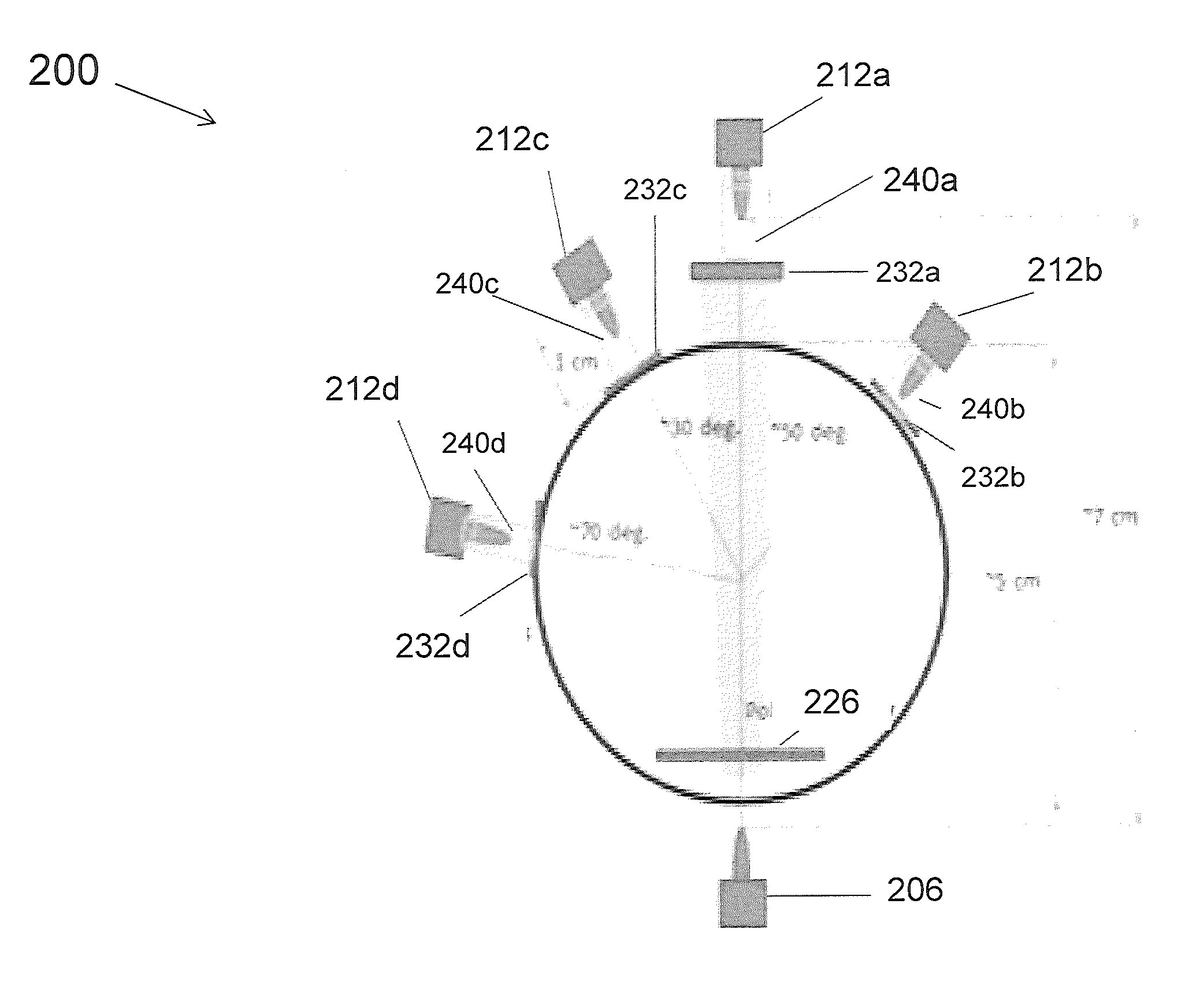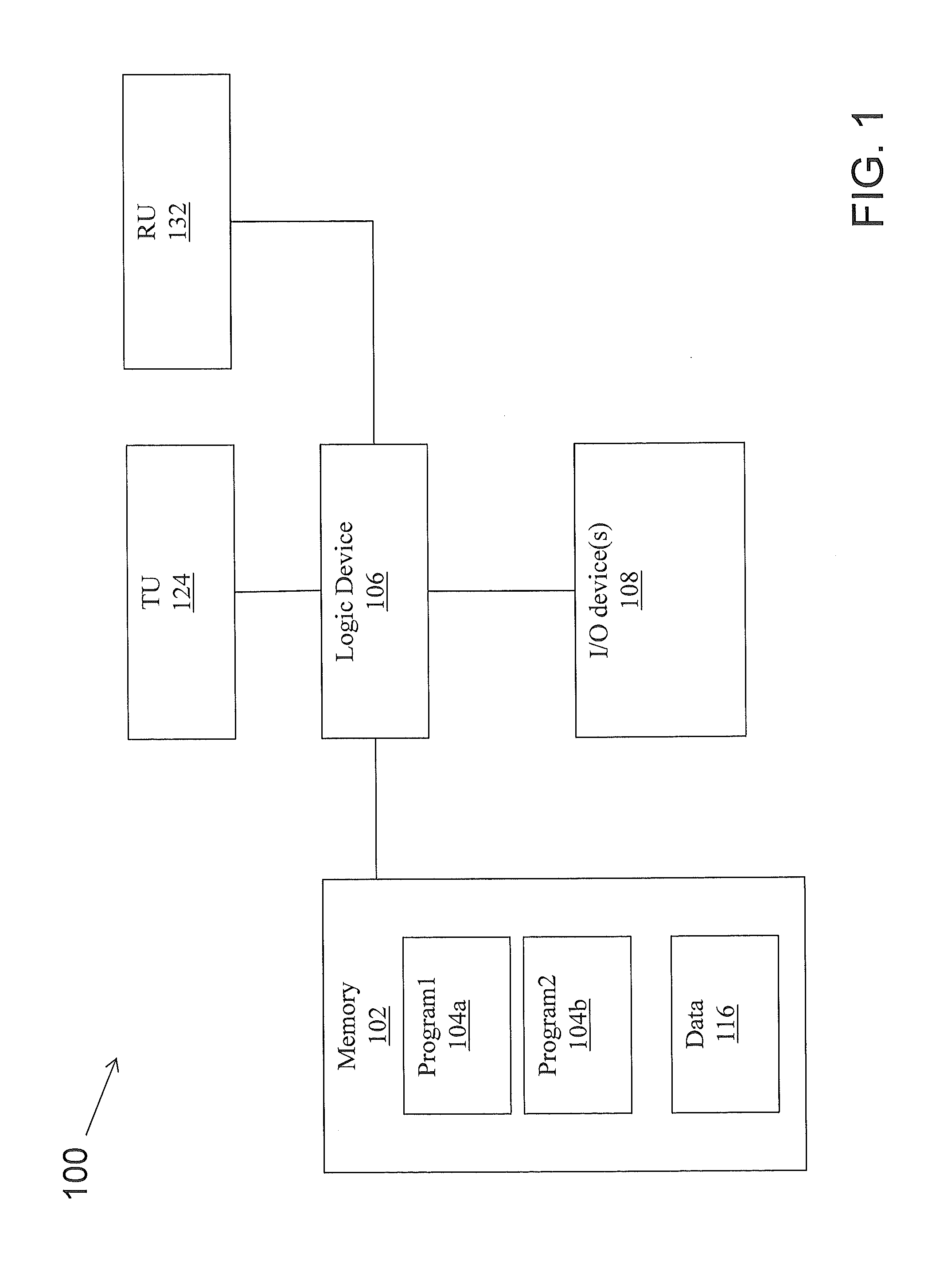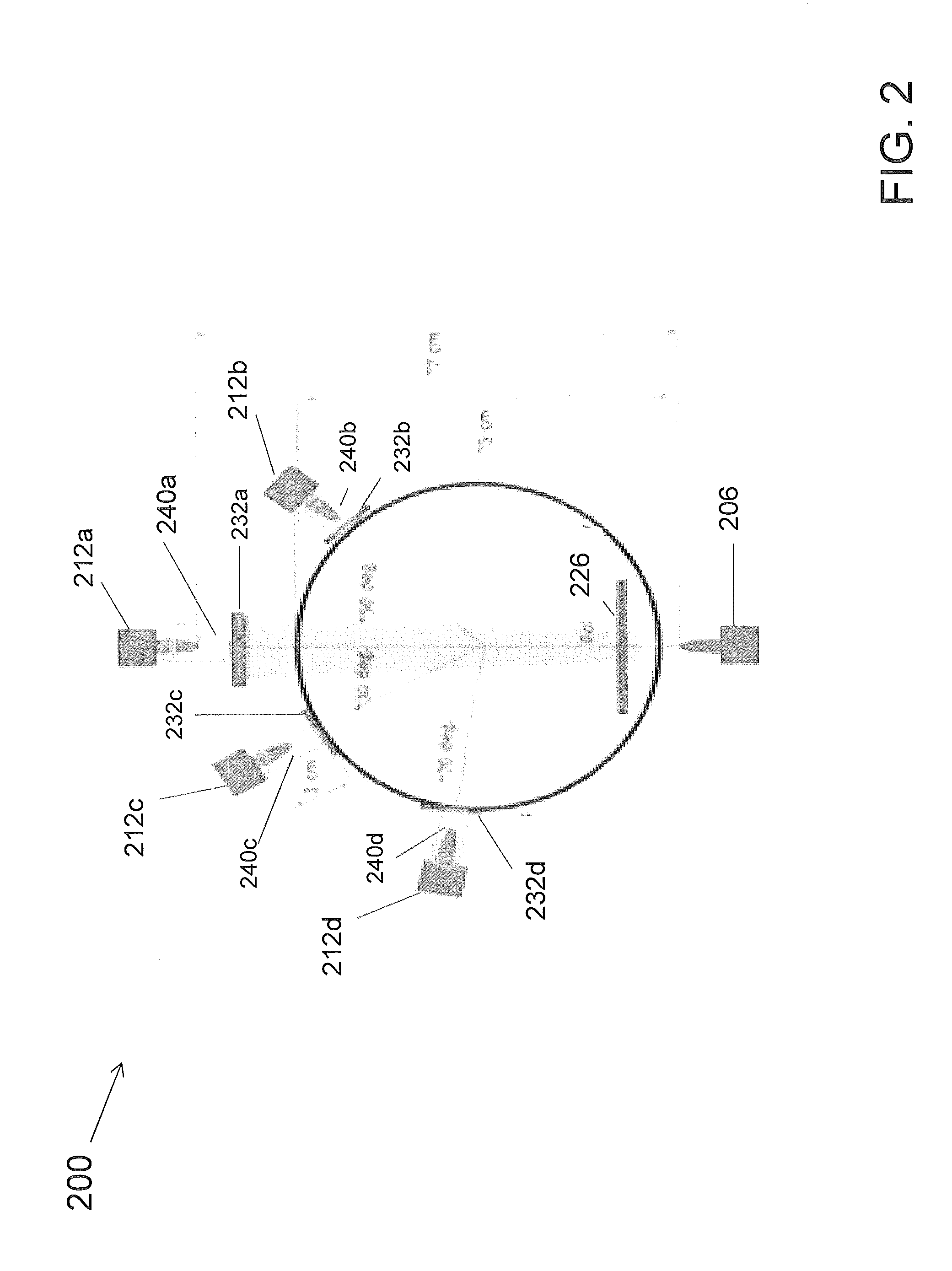Chamber-less smoke sensor
a smoke sensor and chamber technology, applied in the field of chamberless smoke sensors, can solve the problems of false alarms, difficult for smoke particles to diffuse into the chamber, and small particles that may go undetected for a relatively long tim
- Summary
- Abstract
- Description
- Claims
- Application Information
AI Technical Summary
Benefits of technology
Problems solved by technology
Method used
Image
Examples
Embodiment Construction
[0026]It is noted that various connections are set forth between elements in the following description and in the drawings (the contents of which are included in this disclosure by way of reference). It is noted that these connections in general may be direct or indirect and that this specification is not intended to be limiting in this respect. In this respect, a coupling between entities may refer to either a direct or an indirect connection.
[0027]Exemplary embodiments of apparatuses, systems, and methods are described for providing a smoke sensor. The smoke sensor does not include a chamber, but may be located in an enclosure or an alarm, thereby eliminating the risk for clogged chamber inlets and reducing the likelihood of nuisance faults or false positives (e.g., signaling an alarm condition when in fact no such alarm condition is actually present). The sensor may use multiple wavelength light scattering and / or multiple wavelength obscuration as part of a detection technique. I...
PUM
 Login to View More
Login to View More Abstract
Description
Claims
Application Information
 Login to View More
Login to View More - R&D
- Intellectual Property
- Life Sciences
- Materials
- Tech Scout
- Unparalleled Data Quality
- Higher Quality Content
- 60% Fewer Hallucinations
Browse by: Latest US Patents, China's latest patents, Technical Efficacy Thesaurus, Application Domain, Technology Topic, Popular Technical Reports.
© 2025 PatSnap. All rights reserved.Legal|Privacy policy|Modern Slavery Act Transparency Statement|Sitemap|About US| Contact US: help@patsnap.com



